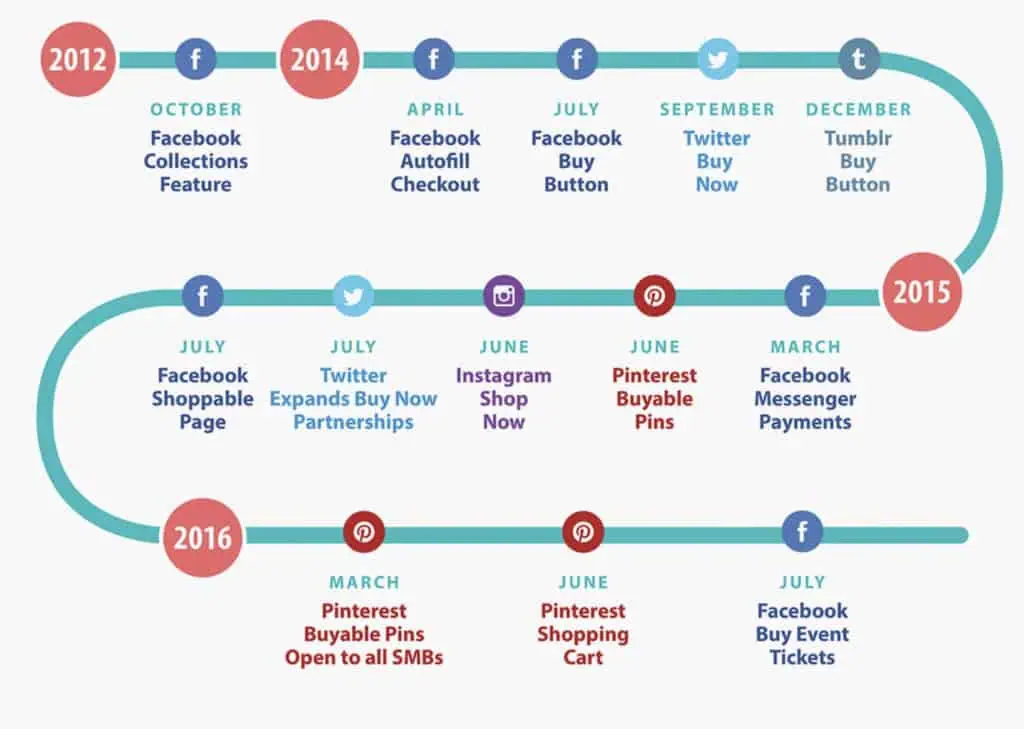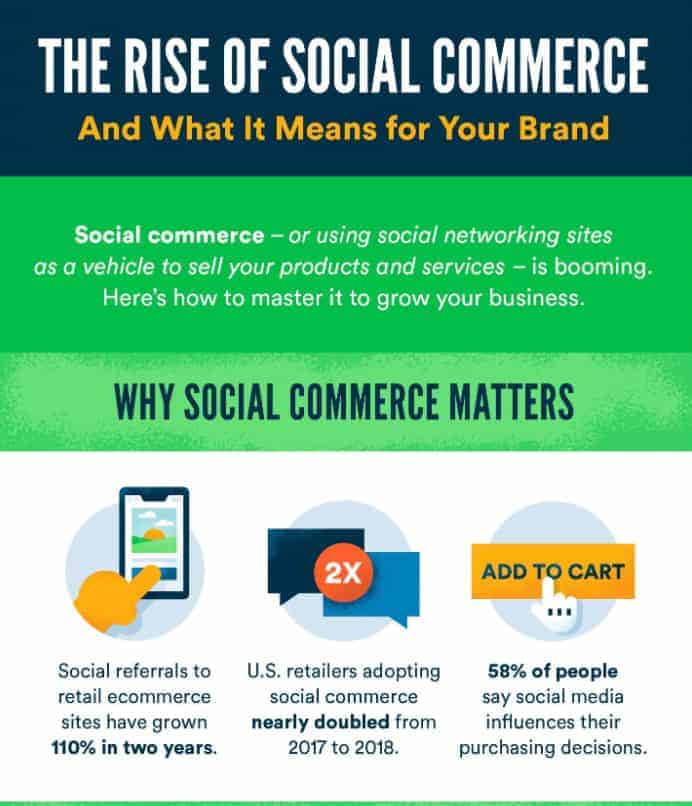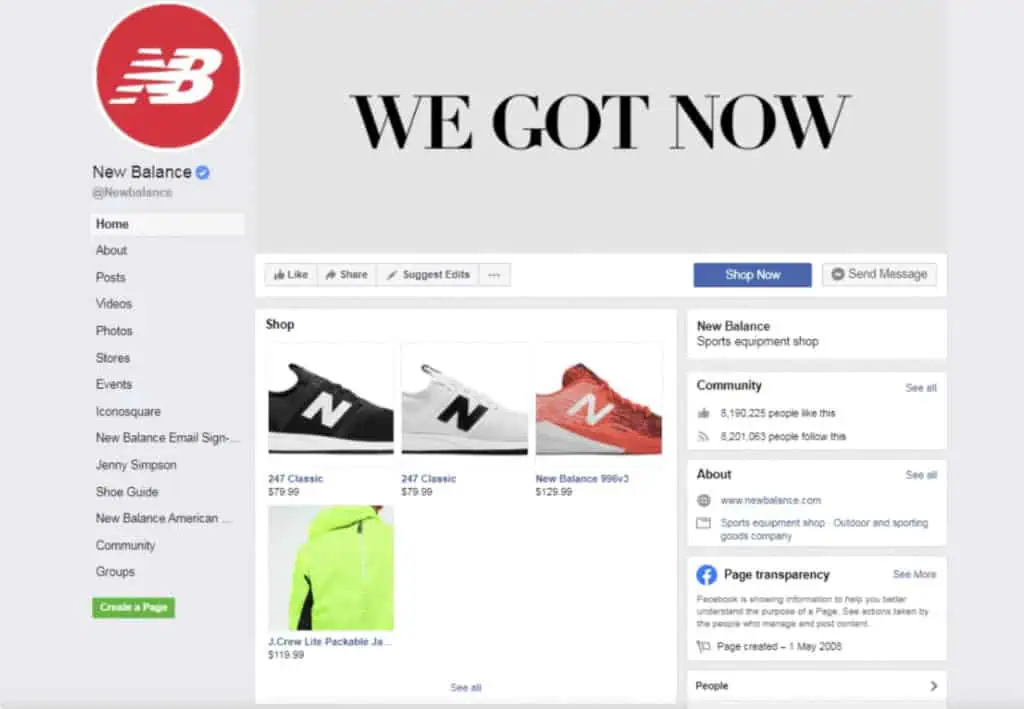What is social commerce and why should your business care about it? You have to examine how you can use technology to create a better customer experience. Social commerce is what happens when savvy marketers take the best of e-commerce and combine it with social media.
Most businesses these day have a business model that supports a social commerce structure.
What Is Social Commerce
Social commerce sells products directly through social media networks. It differs from social media marketing as you’re not redirecting users to an online store, but offering them the ability to checkout directly within the network they’re using at that moment. To simplify the definition:
- Social commerce is the promotion of products and services through networking websites.
- The numbers of retweets, likes and post shares are measures of success for social commerce campaigns.
- Social commerce also seeks to engage online shoppers by offering expert product advice and support.
Over time, almost all social media platforms have incorporated the means of social commerce within their sites.

As eCommerce sales grow year-over-year, businesses who understand the principles of social commerce will inevitably drive more sales than those who sleep on their social presence.
Social Commerce vs. E-Commerce
There are a few certain differences that are to be noted between social commerce and e-commerce
| Social Commerce | E-Commerce |
| More comprehensive customer engagement | Less comprehensive customer engagement |
| Facebook, Instagram, Pinterest, etc. | Amazon, Flipkart, Alibaba, etc. |
| Two-way communication | One-way communication |
| Needs regular updates and monitoring | Doesn't need daily monitoring |
Benefits of Social Commerce
Amongst multiple benefits, below listed are three of the major ones that enable social commerce to be what it is today.
- Drive Authentic Engagement. You have to listen to and interact with your audience. One way to do that is by encouraging user-generated content (UGC). Not only does it build relationships with your customers, but it also extends your reach into your customers’ networks and serves as social proof for your brand. For example, Jambu & Co. does a great job making use of UGC. They popularized their hashtag then reached out to Instagram users who tag themselves so they have a wealth of UGC to use in their own marketing materials.
- Build Deeper Trust and Loyalty. Once you’ve earned a customer’s trust enough to engage with them on social platforms, you create continued opportunities to deepen that trust and earn repeat business.
- Reduces Friction in the Customer Experience. Keep it as simple as possible, use automation whenever possible, and keep the process as short as it can be to keep users from becoming frustrated (or bored) and abandoning their cart. The faster a customer is able to convert, the more likely they are to do so.

Features of Social Commerce
Social commerce encompasses a wide range of functionalities. Here are some of the unique features that bring commerce to the social world.
-
Buy Buttons. Buy buttons are links on social media platforms that move a user into the purchase process. These buttons have been around for a while. Today, though, the future looks brighter for in-app shopping and purchasing. Twelve per cent of consumers said that buy buttons would increase the probability that they would buy a product online.
Facebook has a couple of different social commerce features. One is a Shop Now button you can use on ads. When clicked, that button takes you to a landing page on the brand’s website.
-
Shoppable Galleries and Stories. Shoppable posts on Instagram provide an excellent way to put your brand and products in the limelight — and can be particularly successful for brands with very visual products like apparel, cosmetics, and jewellery. Products are tagged on the image and are clickable.
Here’s where the two diverge. The earlier version of shoppable posts directed users to the brand’s eCommerce site to finish the purchase process. But today, Instagram also has a native checkout option available to brands who want to offer the entire purchase process without redirecting users away from the app.
-
Active User Participation. A survey found that 22 per cent of internet users globally would be more likely to purchase a product online if it was featured in a post with “lots of likes.” That highlights the value of shoppable posts—when users scroll past your photo, they’ll see the image, as well as the products and likes/comments from other engaged users.
- Review-Based Purchases. Word-of-mouth has always been one of the most powerful ways for businesses to reach new customers. Today, one way you can gain a similar impact is by clearly showcasing customer reviews. 93 per cent of consumers say that online reviews impact their purchase decisions.
- Messenger-app Customer Support. Businesses can set up Facebook Messenger as a place to communicate in real-time with customers. Many businesses use the chatbox to start conversations, prompting some of the most common actions to let shoppers know how the messenger can help.
Social Commerce In Application
Here are some real-life applications of social commerce being put into practice and hoe it benefits businesses that make use of it appropriately.
Jordan Take Advantage of Snapchat’s Top Priority
In 2018, Jordan the iconic line of shoes associated together with Snapchat to capitalize on the NBA All-Star game.
The brand offered all its consumers within a specific span of the field to obtain access to an exclusive launch sale. The offer was on its special edition Air Jordan III ‘Tinker’ shoe which was accessible within a certain court area where the game is played.
This integration of social media and shopping makes the sale more interesting and brings people together. It becomes a seamless experience for the customers to buy the shoes.
This is an excellent tactic to steer social media users to empower your marketing efforts and at the same time, increase your brand sales. Using Snapchat was a perfect choice as people do tend to make stories in such events.
Avon Makes Smart Use of Messenger Chatbots
With the use of chatbots, customer engagement can be improved with a lot of fascinating opportunities. Understand this by the example of Avon that used messenger chatbot smartly. Using a special plugin and camera filters permitted them to test a lipstick shade before buying it.
Using this social commerce concept you do not require to fabricate fancy AR filters to draw in more customers. This is a vivid and noteworthy method through which you can also send a newsletter or distribute promo codes.
New Balance Purchases with Facebook Store
Facebook brings about 85% of all social media orders. Also, it is hardly any surprise that this platform is attempting to make a purchase even simpler.
New Balance, a leading brand globally also leverage Facebook social commerce possibilities to make their products easily available to their audience.

The shoppers can start shopping right away from the Facebook store section. Their Facebook store helps the audience to get insights into the products, gather all the relevant product information and proceed to buy the products through checkout CTAs.
Social Commerce Today
With each test, we get closer to seeing social commerce take over as one of the largest drivers of revenue for online commerce. These statistics are altered with events like Black Friday and Cyber Monday, Christmas, or even Valentine’s Day as the major events and indicators of changing consumer behaviour.
- 23% of shoppers are influenced by social media recommendations (so why not sell straight from that recommendation).
- 51% of millennials (who will soon be the major buying market) are likely to make a purchase over social media.
- 84% of shoppers review at least one social media site before purchasing (so it makes sense to sell where they’re going to research).
To Conclude
By going through social commerce examples and tools, you can recognize that it is a profitable journey of opportunities.
In present times, everyone is on social media, making it imperative for your brand to be there. With regards to making purchasing seamless, delightful, and simple, it truly doesn’t beat arriving at clients straightforwardly where they invest their energy online using social commerce.
However, there is no one way of participation in social commerce that guarantees success. The success comes from trying out multiple strategies through trial and errors.







